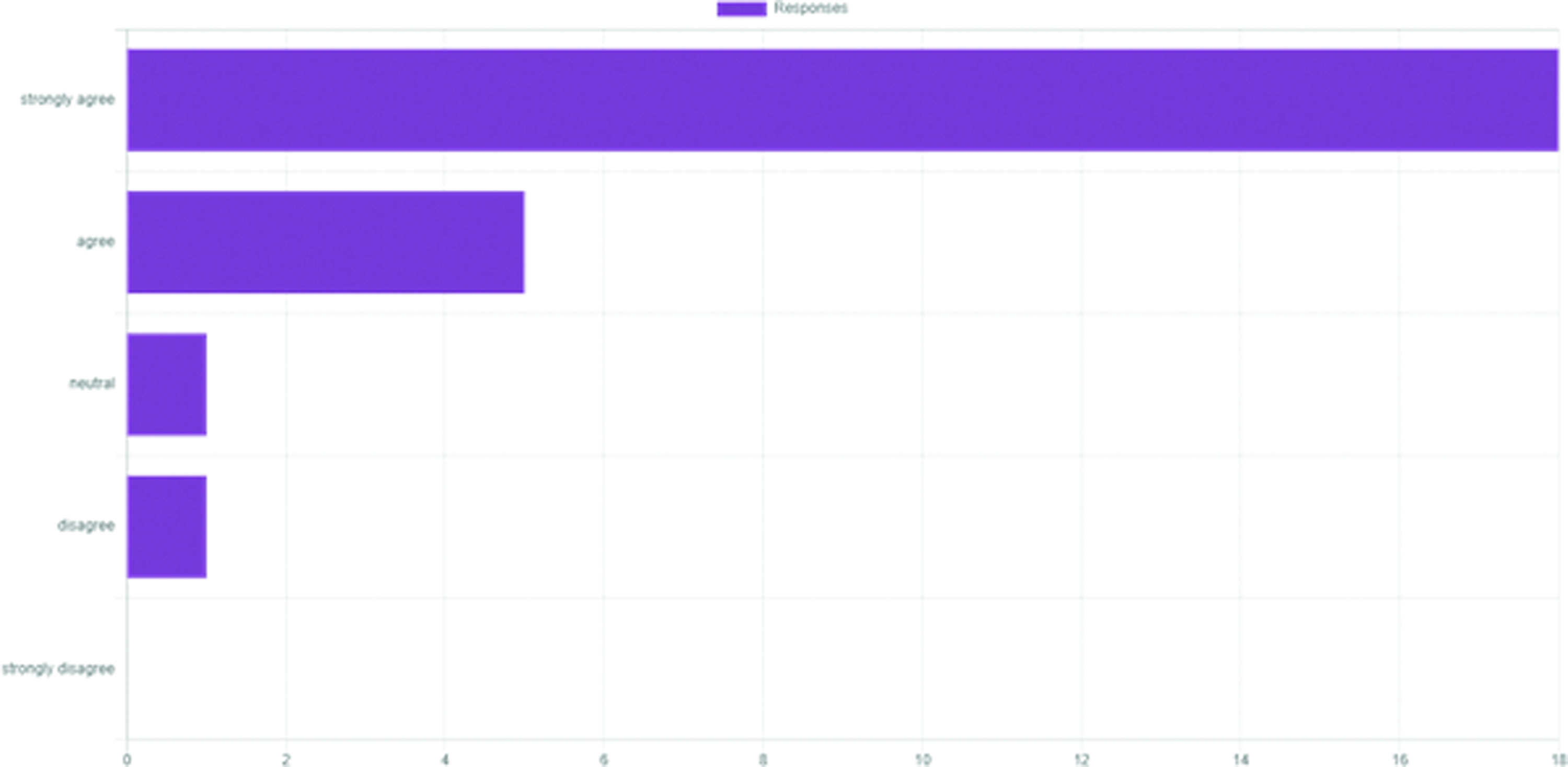
Within health care provision many case history assessments are now performed online [1], with students expected to utilize a variety of virtual platforms in a safe, effective and professional manner.
Aim: To approximate a real environment for students to practice virtual skills of case history assessment with service users.
Objectives: Student development of: 1. Virtual communication skills (verbal, non-verbal, active listening, respect), 2. Clinical reasoning and interpretation, and 3. Reflective skills facilitated by debrief.
Simulation preparation including revision of musculoskeletal assessment and familiarization with virtual ground rules linked to HCPC Guidance on Conduct and Ethics [2].
42 students participated, split into groups of 14 for each virtual simulation session with a total of 5 service users briefed beforehand. Initial warm-up activities in breakout rooms were used to familiarize students with use of the online platform and to facilitate virtual communication skills. Groups of 4 students planned and undertook a virtual musculoskeletal case history with a service user.
The Diamond structure for simulation debrief [3] was facilitated by Faculty staff involving the service users and peers; enabling further development of the students’ clinical reasoning and interpretation. Students reflected on their own performance using a simulation checklist as a resource, closing the loop by creating an action plan prior to their first practice placement.
25 students voluntarily completed an anonymous questionnaire linked to their virtual experiential learning activity. 75% strongly agreed and 21% agreed that the simulation was helpful in their development for placements (see Figure 1-A122).


Thematic analysis of good aspects of the activity identified 4 main themes: 1.
Benefits and realism of service user involvement compared to actors or peers
2.Development of virtual communication and assessment skills
3.Richness of involvement of service users in the debrief
4.Usefulness of warm up activities using virtual technology
Suggestions for improvement showed 2 main themes around increasing planning time and more opportunities for simulation with service users.
Findings demonstrated the simulation aims and objectives were met with students positively reporting that the activity was helpful in their learning ahead of practice placements - enabling development of virtual communication, clinical reasoning/ interpretation and reflection through debrief.
Approximation of a real environment for students to practice virtual case history assessment incorporating service users offers a rich educational example that aligns well with practice and sustainability in the current healthcare environment and is highly valued by students.
Authors confirm that all relevant ethical standards for research conduct and dissemination have been met. The submitting author confirms that relevant ethical approval was granted, if applicable.
1. Mold F, Cooke D, Ip A, Roy P, Denton S, Armes J. COVID-19 and beyond: virtual consultations in primary care—reflecting on the evidence base for implementation and ensuring reach: commentary article. BMJ Health & Care Informatics [Internet]. 2021 Jan;28(1):e100256. Available from: https://informatics.bmj.com/content/28/1/e100256
2. HCPC. Information for students and education providers [Internet]. 2016. Available from: https://www.hcpc-uk.org/globalassets/resources/guidance/guidance-on-conduct-and-ethics-for-students.pdf?v=637106442980000000
3. Jaye P, Thomas L, Reedy G. “The Diamond”: a structure for simulation debrief. The Clinical Teacher [Internet]. 2015 May 25;12(3):171–5. Available from: https://www.ncbi.nlm.nih.gov/pmc/articles/PMC4497353/